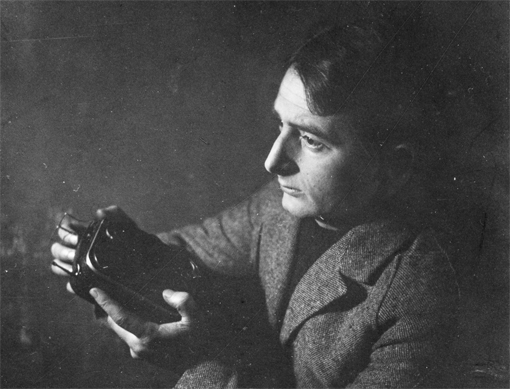Life As It Is: The Dziga Vertov Collection
The Kinonedelja – Online Edition in the Austrian Film Museum brings together the earliest work of Russian film director and theoretician Dziga Vertov. We provide a guide to the Museum’s Vertov collection, including his contribution to the Kinonedelja (Kino-Week) newsreels, now published online.
 About the author: Adelheid Heftberger is curator of the Vertov Collection at the Austrian Film Museum, Vienna. She holds MA degrees in Slavic studies and comparative literature.
About the author: Adelheid Heftberger is curator of the Vertov Collection at the Austrian Film Museum, Vienna. She holds MA degrees in Slavic studies and comparative literature.
We leave the film studio for life, for that whirlpool of colliding visible phenomena, where everything is real, where people, tramways, motorcycles, and trains meet and part, where each bus follows its route, where cars scurry about their business, where smiles, tears, deaths, and taxes do not obey the director’s megaphone – Dziga Vertov (20 March 1927)
One couldn’t sum up his approach to film more fervently than the Russian director Dziga Vertov himself. The creator of well-known films like Man With A Movie Camera (1929), Enthusiasm (1930) or Three Songs of Lenin (1934), had also been a prolific writer and theorist when it came to propagating his Kinoglaz theory. Vertov can be seen as a predecessor to TV or online journalism – to shoot, process and project the images as fast as possible:
Twelve Minutes-Project of mobile film projection unit. Only twelve minutes transpire from the arrival time at the show location to the beginning of the screening – Dziga Vertov (Artistic Calling Card)
Another idea that Vertov nourished continuously was that of establishing a footage library, which could be used by everyone who was willing to work in accordance with his Kinoglaz theory. Material would arrive from all over, coming from a ‘humanity of kinoks’. One of Vertov’s earliest ideas was to create an army of ‘film scouts’ in order to abandon the notion of a single author and proceed to mass authorship, ‘not a coincidental but rather a necessary and all-encompassing global review of the world every few hours.’ Mobility, interactivity and accessibility are the key-terms to describe this way of working, and would also describe the Internet fairly well. Vertov spoke of a ‘negative of time’, the ‘possibility of seeing without boundaries and without distances’ and even of a ‘remote control of the camera.’
Vertov published many articles. Among the most famous ones are his early manifestos, speeches delivered to his fellow filmmakers and Soviet officials, composed treatments, scenarios and charts to visualize his complex montages. Most of these documents are held in the renowned Russian State Archive of Literature and Arts (RGALI) in Moscow, donated by his widow and co-worker Elizaveta Svilova after Vertov’s death in 1954. But she kept some of the most interesting documents for herself, later bequeathing them the Austrian Film Museum.

Dziga Vertov (Austrian Film Museum)
In order to understand better how parts of these precious documents found their way out of Russia, we need to look at some developments in the cinema context in Vienna in mid-1960. In 1964 two young film enthusiasts, Peter Konlechner and Peter Kubelka, founded the Austrian Film Museum, because they saw the need to establish a different film culture to the one already in place. Already from the start they included Russian films, especially the Russian Avant-garde, in their screenings. But Vertov had been on their agenda even before setting up the Film Museum and its own cinema – Peter Konlechner presented Vertov’s Man With A Movie Camera on 23 April 1963 in the films club he headed at the Technical University. As early as 1967, the Austrian Film Museum started to collect films, writings, photographs, posters and other documentation relating to (and created by) the Soviet filmmaker and the same year the Film Museum published the first German translation of his selected writings. Five years later, in 1972 Peter Kubelka and Edith Schlemmer restored Vertov’s early sound film classic Enthusiasm, and in 1974 Peter Konlechner and Peter Kubelka presented a large-scale Vertov exhibition at the Albertina. In organizing these projects, the Film Museum established a close relationship with Vertov’s widow and artistic collaborator, Elizaveta Svilova. Between 1970 and 1974 Svilova donated part of Dziga Vertov’s personal collection and papers to the institution, thus laying the foundation of what is now the Vertov Collection at the Austrian Film Museum.

 Learning on Screen
Learning on Screen